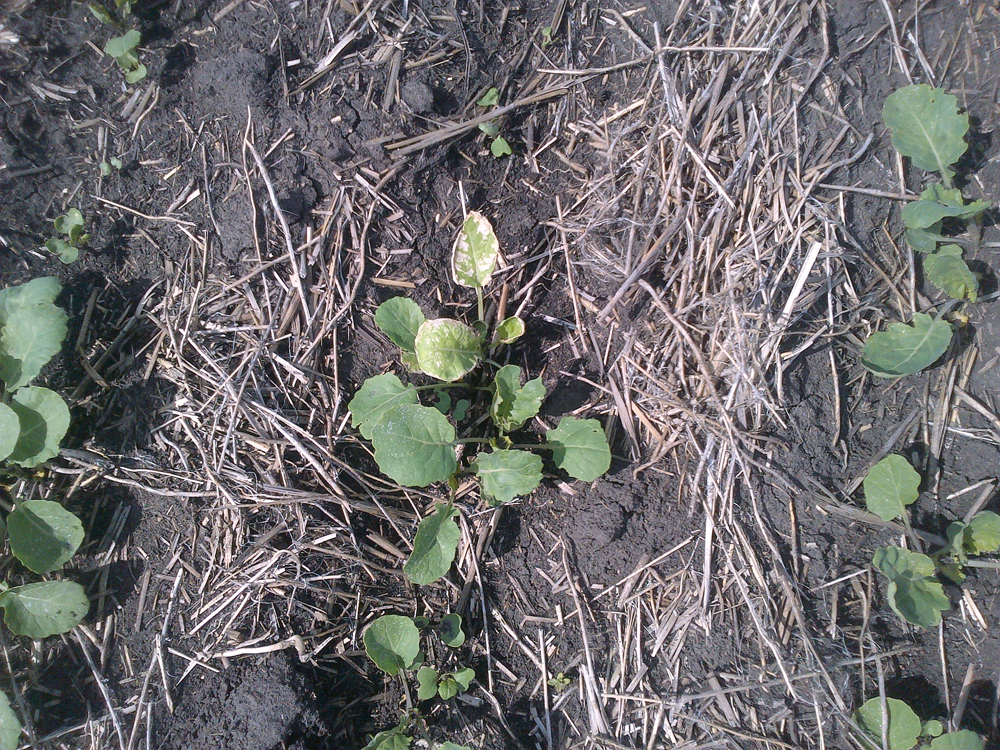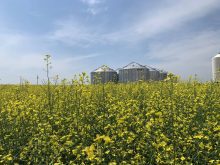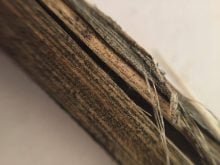
John farms 2,500 acres of mixed grains and oilseeds, including wheat, oats, canola, and flax, in addition to the odd season growing clovers and specialty crops, such as borage and hemp.
It was mid-June when John contacted me about one of his canola fields. He was convinced the Group 10 herbicide he’d applied to his herbicide-tolerant canola had damaged his crop.
“The crop looks almost burnt,” he said. “I think it’s surfactant damage with the way the leaves are drying up.”
The plants in some areas of the field were severely wilted, with the headlands and regions nearest the river being the worst hit, he said.
On June 15, I arrived at John’s farm, which is located near Carrot River, Sask., around midday, thus giving the crop a chance to perk up, as we had been experiencing cooler temperatures at night. Temperatures during the day were in the mid-teens to the low 20s.
Read Also

Claas brings 1000 Series SP forage harvesters to Canada
In mid-August, Claas unveiled its new line of Jaguar forage harvesters at an event in Visalia, California, deep in the heart of that state’s dairy region.
There was an observable difference in the plants’ development in some areas of the field, which was set back, especially on the headlands and riverbed regions. In addition, the plants’ leaves were cupping, however no purpling or discolouration was observed, which would have led me to believe we were dealing with either a residual chemical, or possibly a sulphur or other nutrient deficiency.
John thought the Group 10 herbicide he applied had damaged the herbicide-tolerant canola crop somehow. After determining his spray rates and water volumes were correct, and following an explanation of how glufosinate-ammonium (the Group 10 herbicide) works with the herbicide-tolerant canola variety, John and I agreed it was unlikely the herbicide had injured the plants.
We decided to meet up again in two days to give the crop time to pop back, just in case the symptoms were directly related to the -5 C frost the area received May 29. During that time, John could check his spray records to determine if he’d sprayed any residual herbicides on the field in question.
Two days later, there was a dramatic change to the plants’ appearance and development in the affected areas. Not only did their development continue to be set back, the injured plants had severe cupping and purpling. It was now obvious the crop had been damaged by a residual herbicide.

At this point, we examined John’s spray records. Everything was in order — the correct water volumes and herbicide rates (Group 10 and Group 1) had been used, the field was sprayed under blue skies during the heat of the day at a temperature of 19 C, with relative humidity at 31 per cent.
However, John had sprayed a quarter section of peas the previous day with a herbicide containing Groups 1 and 2 to control broadleaf and grassy weeds in that crop. Were we dealing with Group 2 residue damage? It now looked like that was a good possibility. This incident may have happened as a result of a tank cleanout issue.
John’s spray unit includes a polyethylene sprayer tank. We reviewed John’s entire rinse procedure, and it was impeccable. His cleanout method included several rinses of the tank, booms and filters using a spray tank detergent/decontaminator, which neutralizes and solubilizes certain herbicides, and ammonia, which helps raise the pH of the cleaning solution, aiding the dissolution of herbicides. It was evident he understood tank residues.
How was it possible we were observing residual herbicide damage with John’s cleanout regime?
Crop Advisor’s Solution: Rigorous tank cleanout reduces risk of residue injury
John’s spray records indicated he’d sprayed the herbicide-tolerant canola with a Group 10 herbicide at the correct rates. However, when examining all spray records, we noticed John had sprayed a quarter section of peas with a herbicide containing Groups 1 and 2 the day before spraying this canola field.
Despite John’s correct tank cleanout procedures, the symptoms of the injured canola pointed to residual herbicide damage. I’ve come across numerous Group 2 residual damage incidents in the past, which were easily diagnosed as improper cleanout methods due to hasty rinse procedures, or lack of knowledge of the proper steps.
Yet, in some cases, like John’s, the producer understood and implemented correct cleanout methods. These cases were less straightforward; however, after consulting sprayer manufacturers, chemical reps and other producers, I realized it wasn’t the growers’ cleanout procedures at fault, but simply how well the cleaners were working in removing any residual herbicide etched into the polyethylene tank walls.
Many growers have shared with me the different ways they have tackled this issue. The only clear fact is there
is no single solution, but using strong detergents with adequate concentrations of ammonia, in addition to more rigorous tank and boom cleanout is key when dealing with Group 2 or 4 residual damage issues. Your crop advisor or agronomic consultant will also have some good suggestions to eliminate the risk of residual herbicides damaging your crops.
As bad as the injured areas of the canola crop looked throughout all growing stages that summer, John was pleased to inform me that his yield loss was minimal — only six to eight bushels per acre — at harvest.
Mike Wassill works for Richardson Pioneer in Crooked River, Sask.















